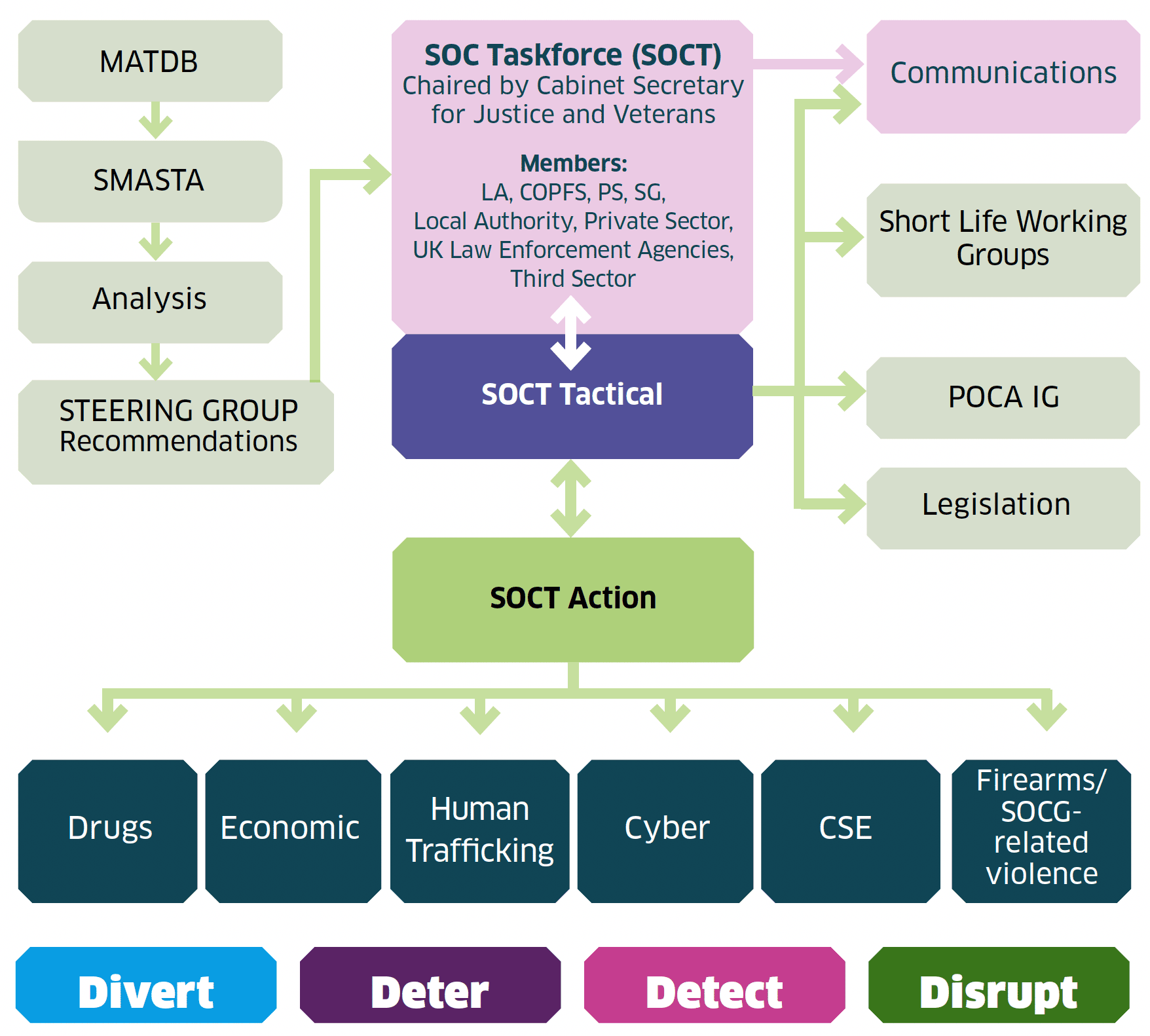Serious Organised Crime strategy
The Serious Organised Crime Taskforce Strategy seeks to close the potential gap between intelligence and tasking through the better use of threat assessments and aims to reduce the harm caused by serious organised crime by ensuring that all partner bodies work together.
Annex B: structures and governance
We propose to create a new, small steering group to analyse the available intelligence and make recommendations to the Taskforce about the emerging priorities. The core group membership will comprise individuals from a small number of key organisations including the four Taskforce strand leads, and could be augmented as necessary by others whenever the group agrees it would be beneficial. For each specific threat identified, the steering group will be supported by a short life working group bringing together the relevant policy and operational interests so that discussions benefit from specialist knowledge and input at an early stage.
Once the Taskforce has agreed actions to be undertaken, the steering group will work with Taskforce members, the short life working group and with the assistance of theme leads to deliver those priority actions. This would create an effective chain of accountability and clarify roles and expectations.
We will also develop underpinning guidance for steering group members, the wider Taskforce and the secretariat, including role descriptions, to ensure clarity on what we expect to happen and the part we expect each individual organisation to play. The intention is not to create a new layer of bureaucracy but to make clear our expectations of concrete action in realistic timescales and to create a culture of prompt, cohesive action.

Contact
Email: alison.morris@gov.scot
There is a problem
Thanks for your feedback